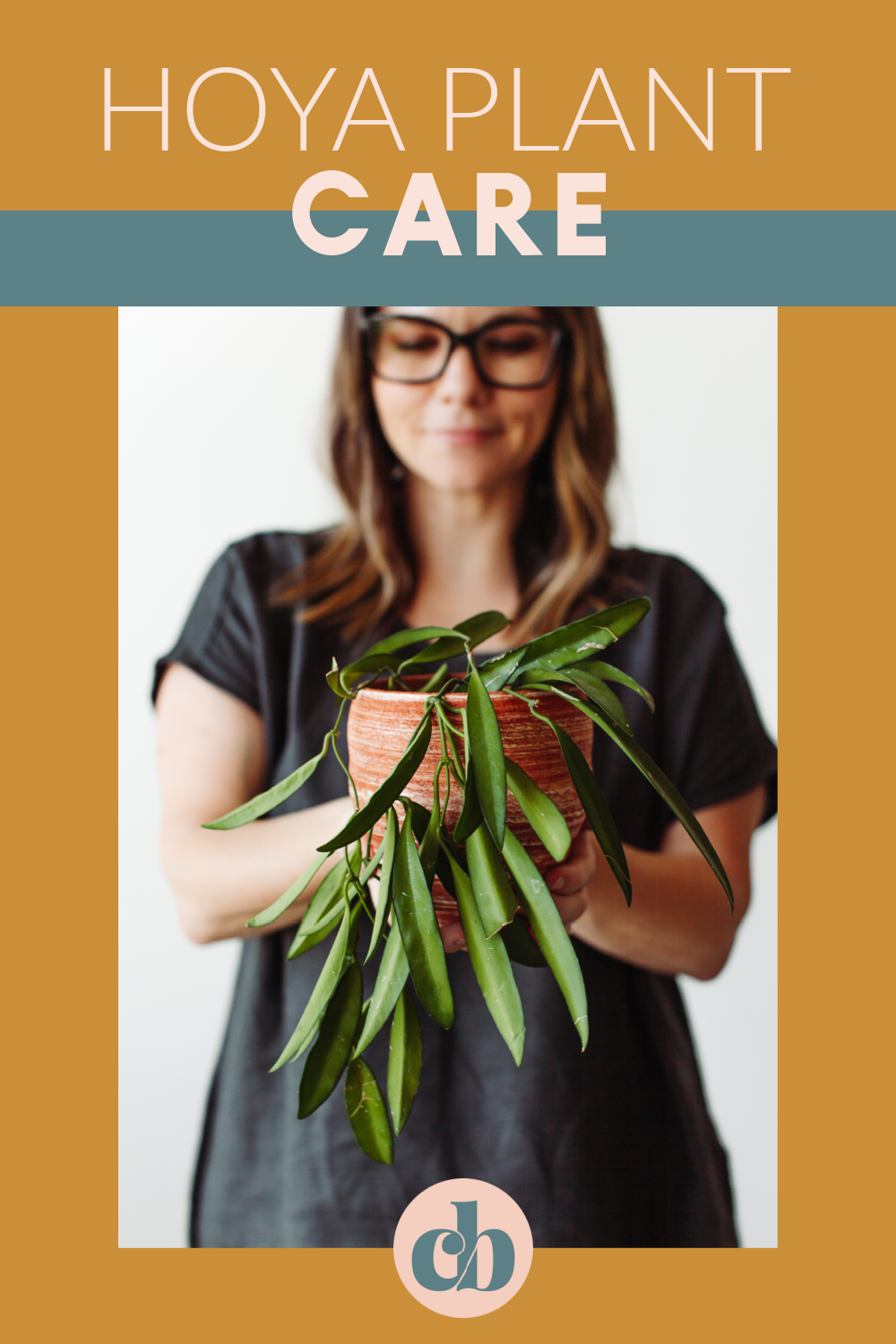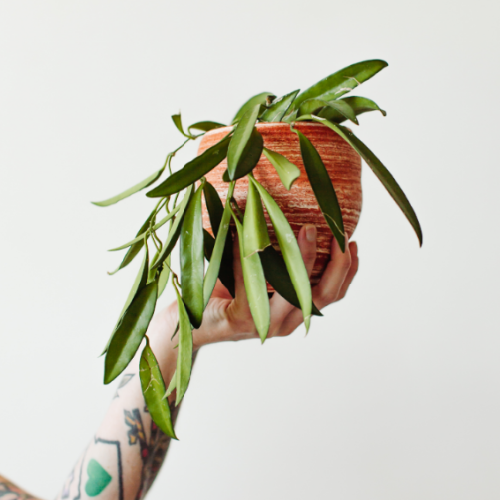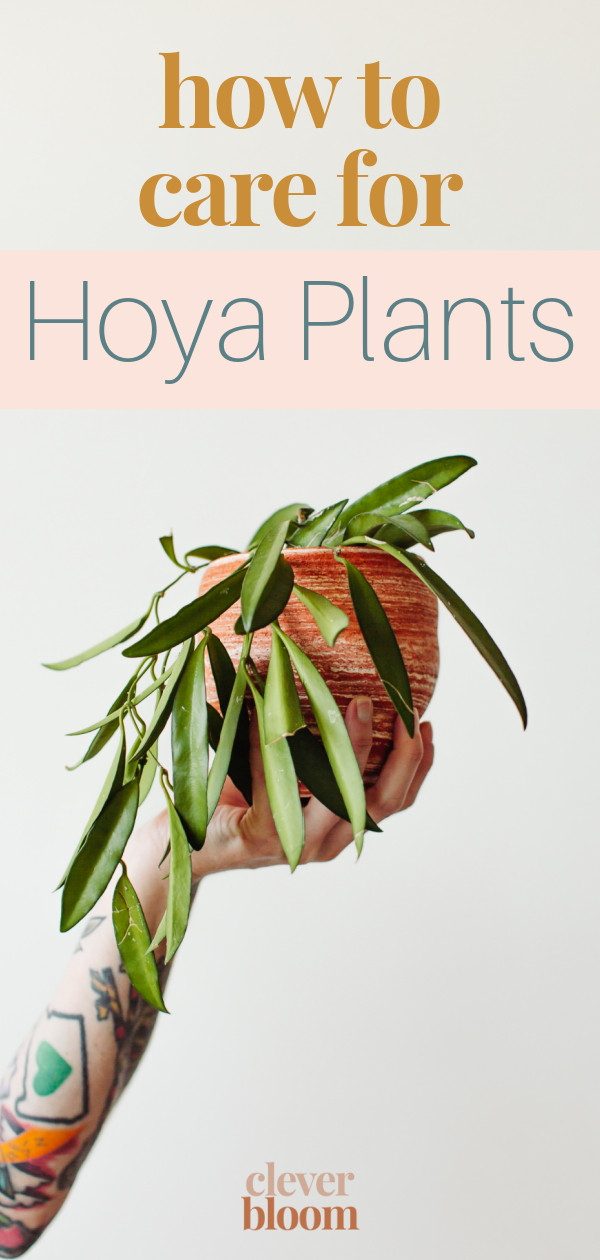
Hoya Plant
Hoya is a genus of tropical plants with over 200 species. They vary in color and shape with wax-like foliage. They make great houseplants for your tabletop or better yet, hanging in a complimentary plant hanger. If you treat them extra special, Hoyas will bloom. Their blooms are small star shaped flowers that (in some species) clump together to make a large umbrella like shape. Flowers bloom in yellow, red, pink, white, purple, and more.
Quick Tip: For the overall health of your Hoya Plant, think brighter light, less water.
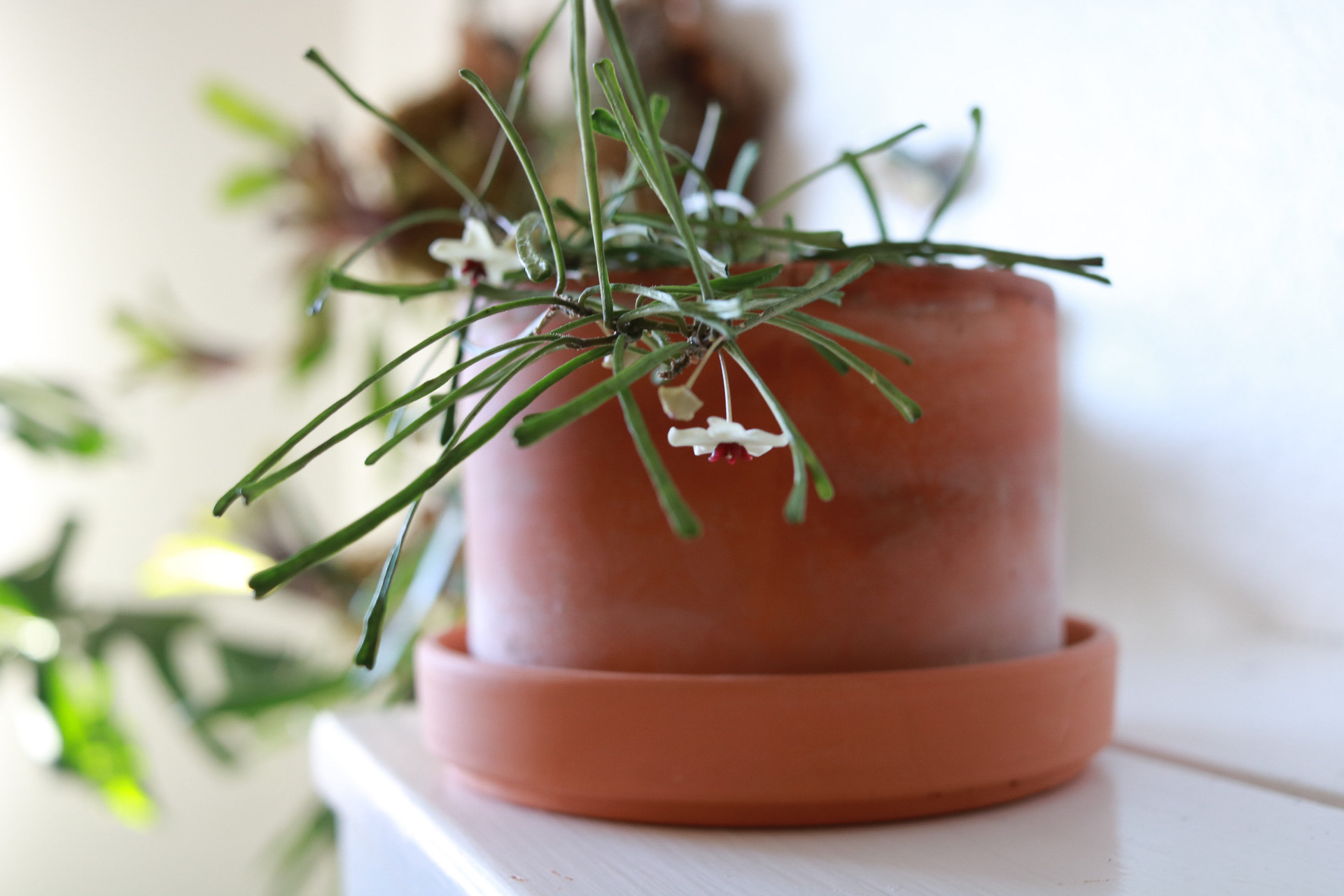
Hoya retusa
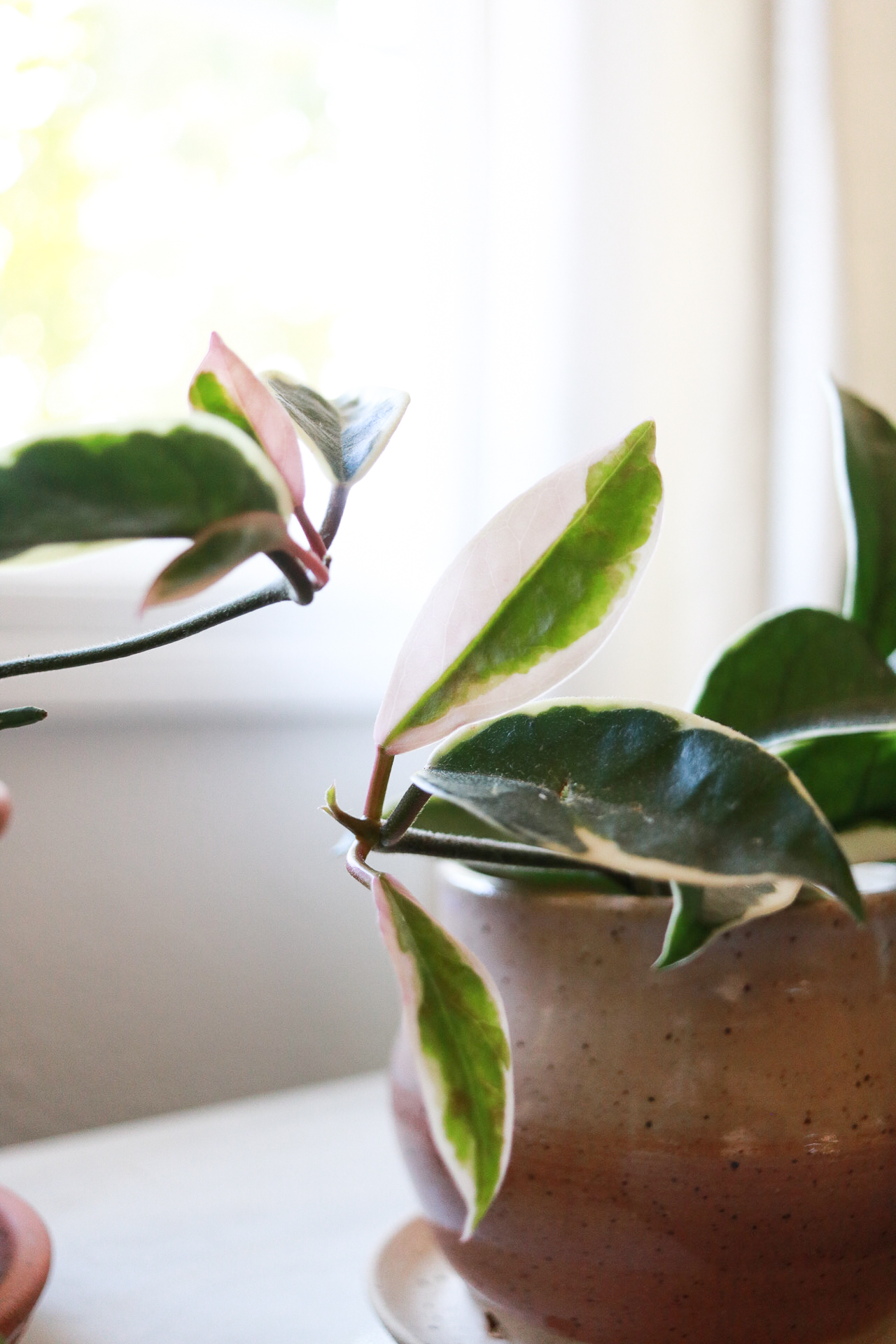
Hoya carnosa variegata ‘Tricolor’
Containers
Hoya plants are tropical plants, and can be epiphytic. Epiphytic basically means that they can grow on other trees and plants in the wild, and don’t require much soil to live. Because of this, Hoyas prefer to have drier soil, and can be root bound. To help prevent overwatering, I prefer to house Hoyas in terracotta or clay pots. Both materials help to pull moisture from the soil, and allow the soil breathe. Plastic pots help to retain moisture, and may not be the best material for Hoyas. No matter which type of material you choose, the most important thing to remember is that your pot will need a drainage hole. Water must be able to drain in order to keep your Hoya healthy.
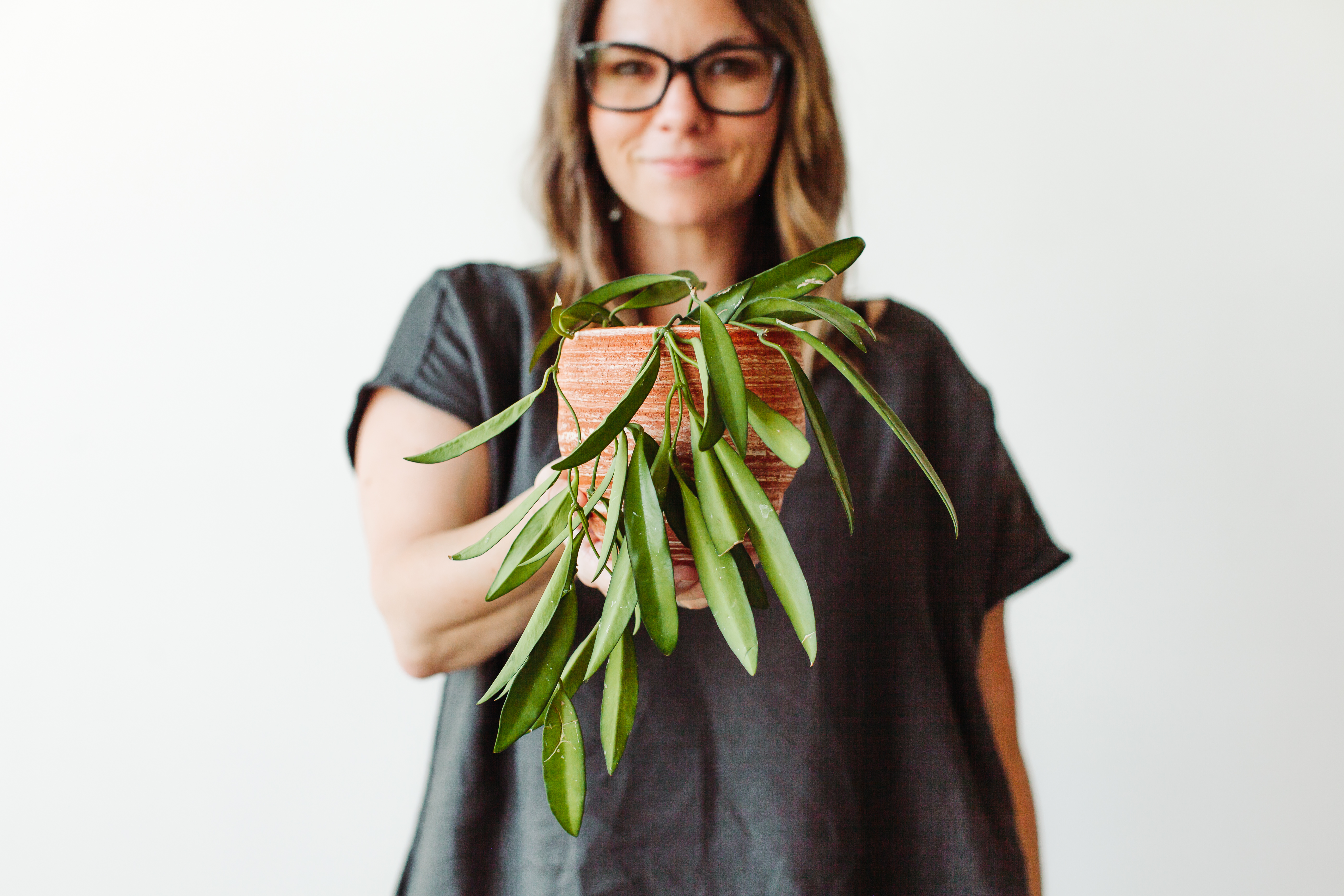
Light
Like any tropical plant, Hoyas like bright indirect light when they are indoors. People argue the term “bright indirect light”, saying that it’s a poor way of describing the actual light one plant may need. For me, and probably many others like me, it’s the best (and easiest) way of understanding. So bright light means, close to a window providing the most amount of day light. In my home, it’s the south facing window, and secondly, the west facing window. And indirect means, you don’t want the sun to be shining directly on the plant. You can use a sheer curtain to help create that indirect light.
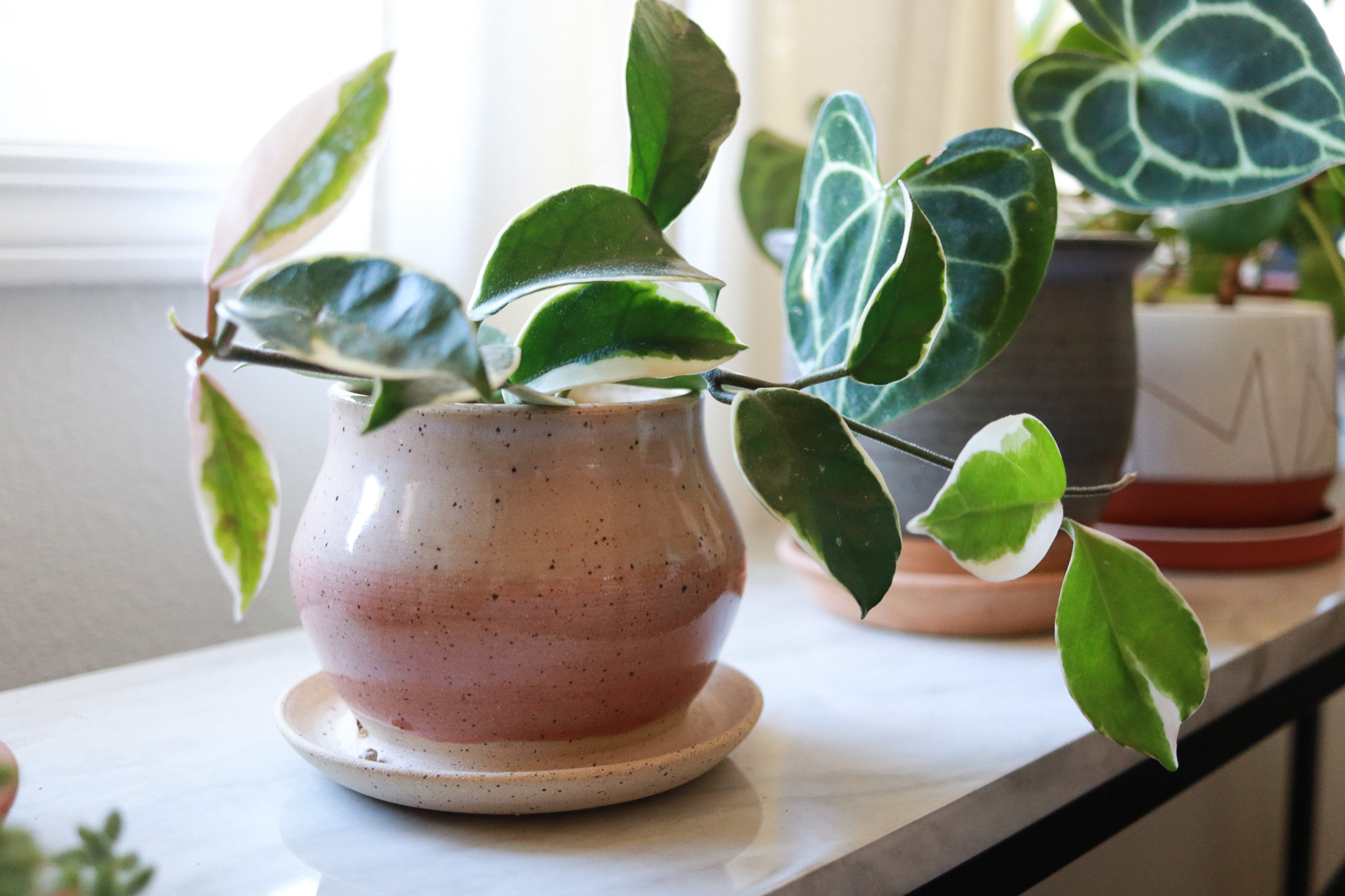
Hoya carnosa variegata ‘Tricolor’
Water
Water Hoya plants sparingly. Give them a thorough watering, meaning run water in the soil until water starts to trickle out of the drainage hole. Once you have watered the Hoya plant, observe the soil, and only water again when the majority of the soil has dried out. Hoyas are able to hold water in their leaves for longer periods of time, and don’t require frequent waterings. You can use a moisture meter or even bamboo skewers to see if the soil is still moist at the bottom of the pot.

Soil
Hoya plants need well draining soil. I like to create my own Hoya mix. One part potting soil, one part succulent soil, one part perlite/orchid bark (combined). If you aren’t able to mix your own, no problem! Stick with succulent soil, it allows for the proper drainage that most Hoya Plants need.
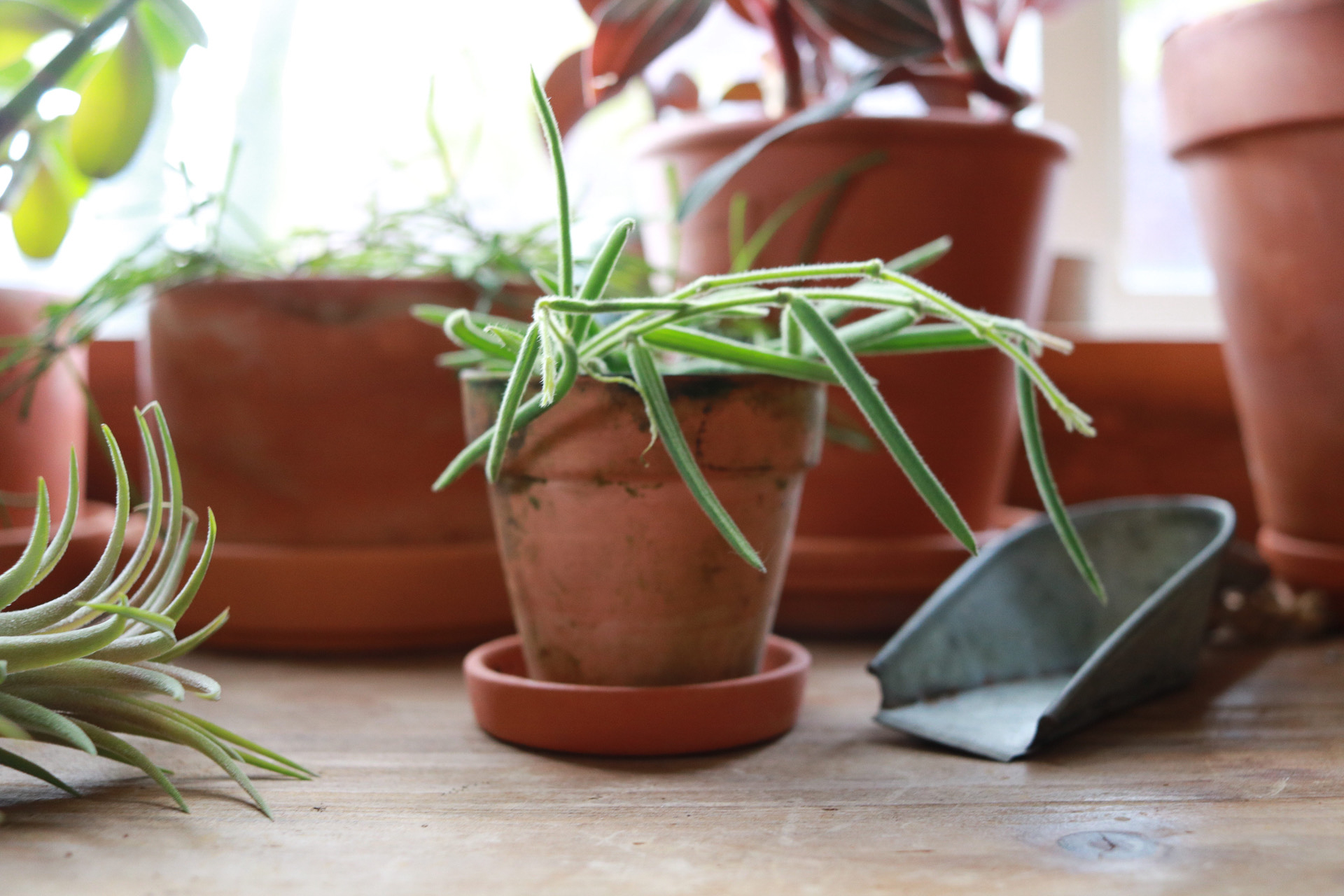
Hoya linearis
Propagation
Click here to get step by step instructions for propagation. It’s pretty simple. Locate the place to cut, snip, and stick the cutting in water. Hoyas can be propagated very easily. Just be patient, some Hoya can take a while to begin rooting.
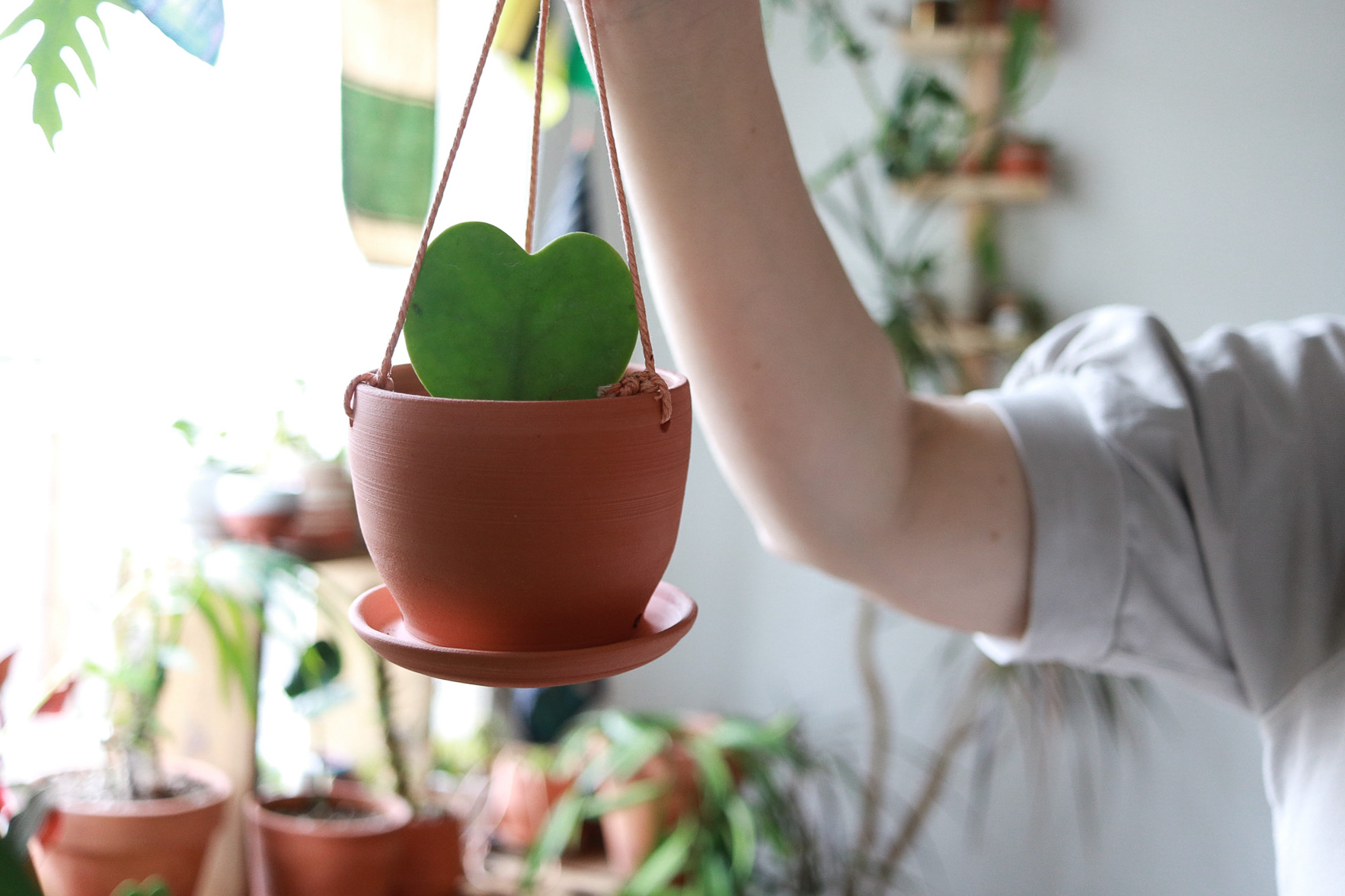
Hoya kerrii
Pests
No matter what type of pests make a home and feed on your houseplants, the best thing is to prevent them in the first place. I use Bonide Systemic Insect Control in the soil of ALL of my houseplants, including Hoyas. Apply as directed every 2-3 months to prevent pests from even starting.
Mounted Hoyas
I love creating mounted plants. Hoyas are great plants to mount due to their epiphytic nature. There is a full mounting section in our book How To Raise A Plant and Make it Love You Back or you can check out this quick guide. Mounted Hoyas are beautiful and I highly recommend trying one out.

Hoya shepherdii
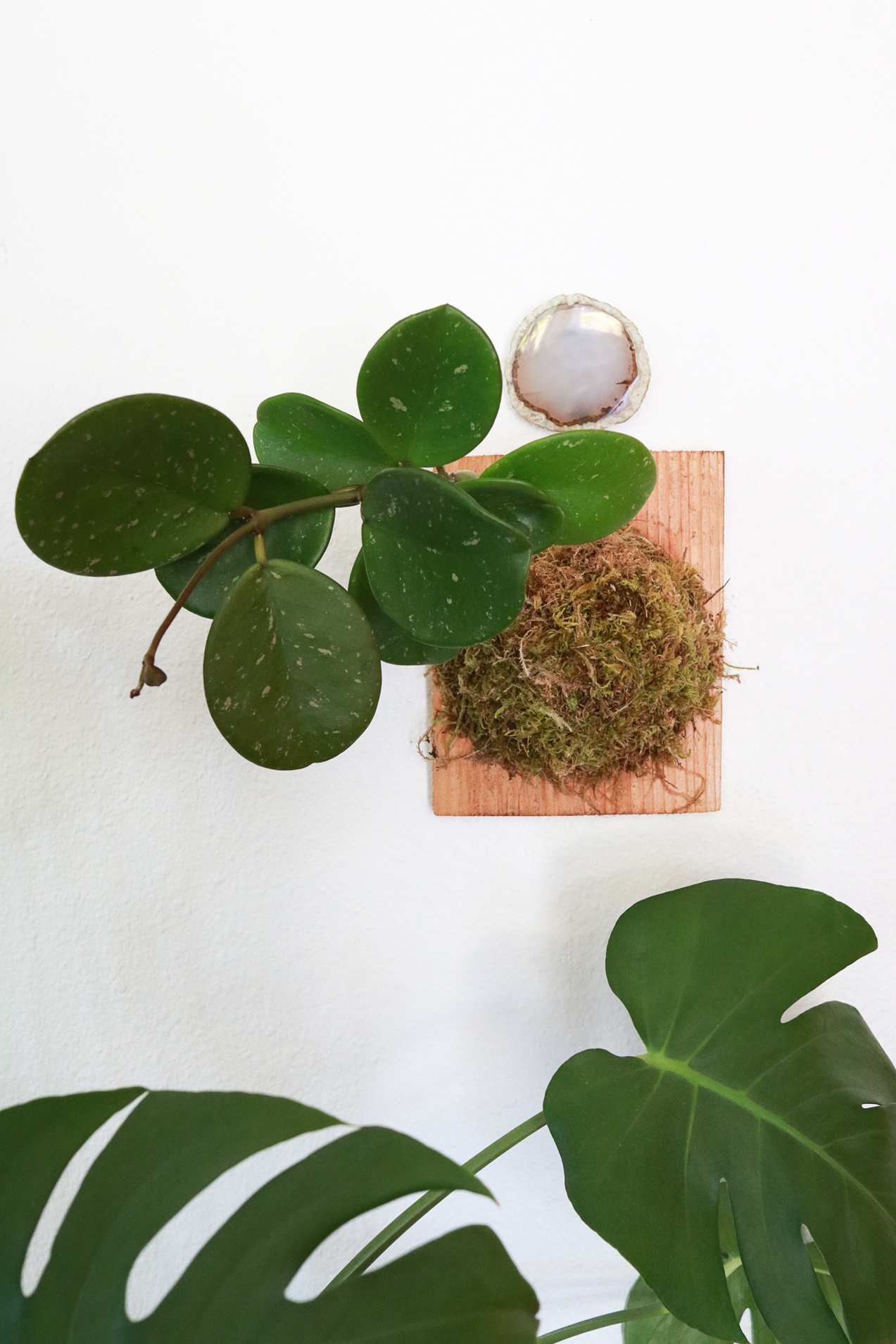
Hoya obovata
Thank you for visiting Clever Bloom today! Be sure to visit me on Pinterest or IG for more plant care, decor, and DIY.
Pin for later!
